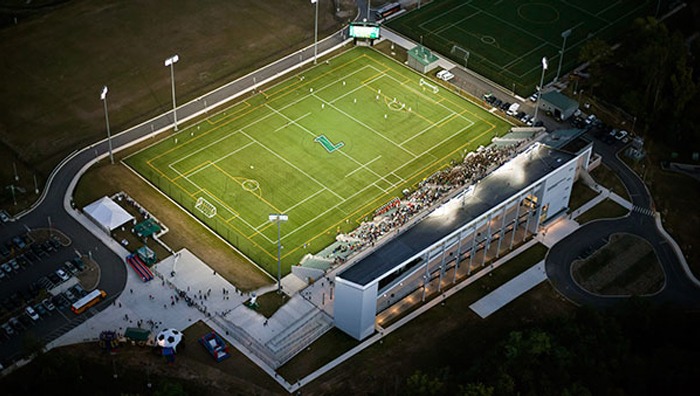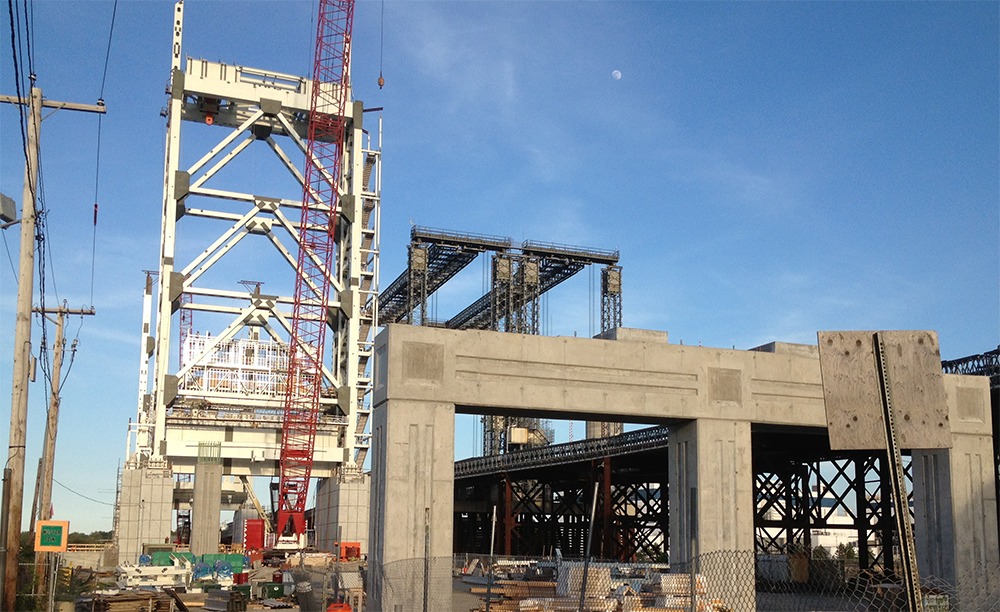
Higher education
Haley & Aldrich helps a college overcome community opposition to transform landfill into sports complex
3 athletic fields
at new sports complex
40 acres
of redeveloped woodland set aside for public use
Summary
- Loyola University in Baltimore planned to build an athletic facility on former landfill, which presented challenges both in the site’s ability to support the planned construction and its potential to pollute the surrounding neighborhood’s air, soil, and water.
- Our team conducted thorough site research and designed a plan to minimize future using reinforced slopes and designed to minimize future structure settlement.
- We also designed and engineered an active gas collection system beneath the sports complex to optimize methane collection and dissipation, and we worked with the community to dispel pollution fears.
Client challenge
Loyola University Maryland sits in a residential section of Baltimore and has little potential for to grow the campus footprint through adjacent real estate. The university decided to build an athletic complex off site to expand academic facilities on site. The university purchased a 52-acre parcel nearby that had been the site of three municipal solid waste landfills.
The project posed significant engineering challenges given that much of the final facility would rest on land that had been created through uncontrolled filling, with long-term settlement taking as much as a century to conclude. The landfill waste raised additional questions, both of its stability to support the planned construction, as well as its potential to pollute the neighborhood’s air, soil, and water. This latter issue became a flashpoint for vocal opposition to the project. Another prominent objection was the college’s encroachment into what had become de facto public green space.
The university turned to Haley & Aldrich as a partner for our capabilities to perform demanding geotechnical and environmental engineering while balancing and navigating sensitive community issues.
Our approach
Haley & Aldrich consultants knew they needed to bring their technical excellence to bear for the project, including comprehensive geotechnical engineering, hydrogeological evaluations, and human health and environmental risk assessment services. As importantly, the university needed an effective approach to meet all stakeholders’ needs – including project opponents.
Our staff first conducted thorough site research and designed a plan to reduce the impacts of future landfill settlements on the site infrastructure. We also proposed deep dynamic compaction treatment of the existing municipal solid waste to reduce future settlements in sensitive areas. Based on our environmental risk assessment, we recommended installing a landfill gas control system, plus engineering controls to reduce potential noxious odors from being emitted.
We planned a series of vegetated reinforced steep slopes for five sensitive areas of the site to deal with concerns about the proposed re-grading of the closed landfills. We designed the engineered slopes with built-in geotechnical instrumentation to record future settlement and constructed the slopes using controlled fill to minimize settlement beneath the access roads and playing fields. Also, the vegetation on the slopes would support the natural greening of the facility, which would be visible from local neighborhoods.
Haley & Aldrich also played a key role in working with the community to dispel fears and opposition as well as assert Loyola’s commitment to the quality of life for the neighborhood. We worked closely with the Maryland Department of the Environment and the city of Baltimore on all aspects of the closure and redevelopment, made presentations to the city of Baltimore agencies responsible for issuing building permits, and assisted in public meetings with the affected community. Ultimately, all stakeholders were satisfied and the project was completed.
Value delivered
- Built a modern athletic complex with three fields on terrain leveled using reinforced slopes and designed to minimize future structure settlement
- Designed and engineered an active gas collection system beneath the complex to optimize methane collection and dissipation
- Worked with the host neighborhood to adopt the redeveloped property by creating a safe environment and committing 40 acres of its woodland area to public use
For more information, contact:

Principal Consultant, Geotechnical Engineering

Program Manager, Building & Infrastructure












